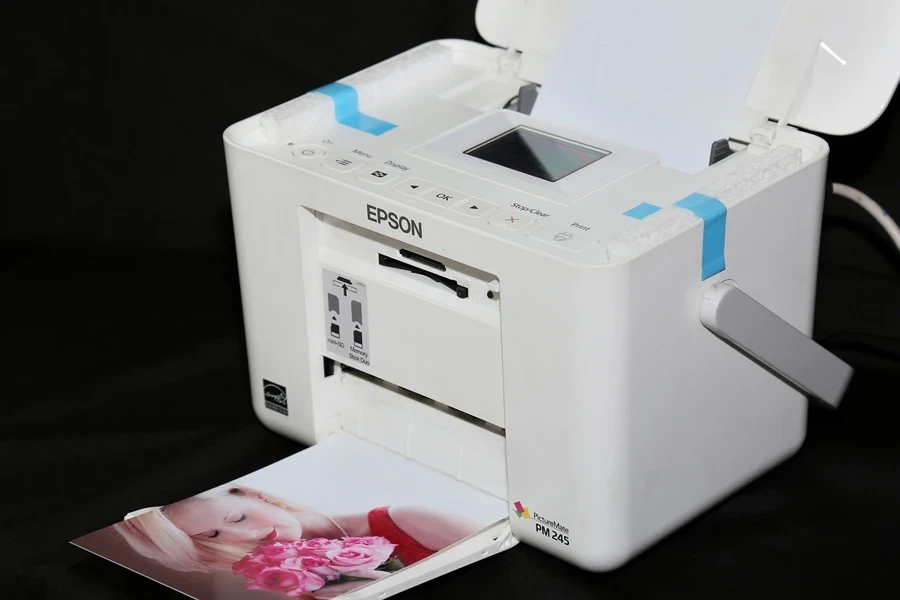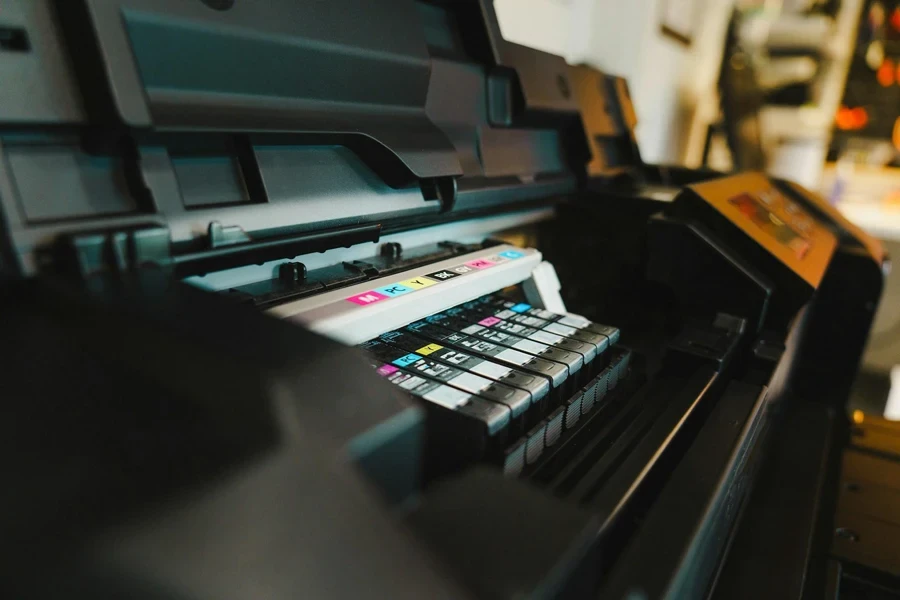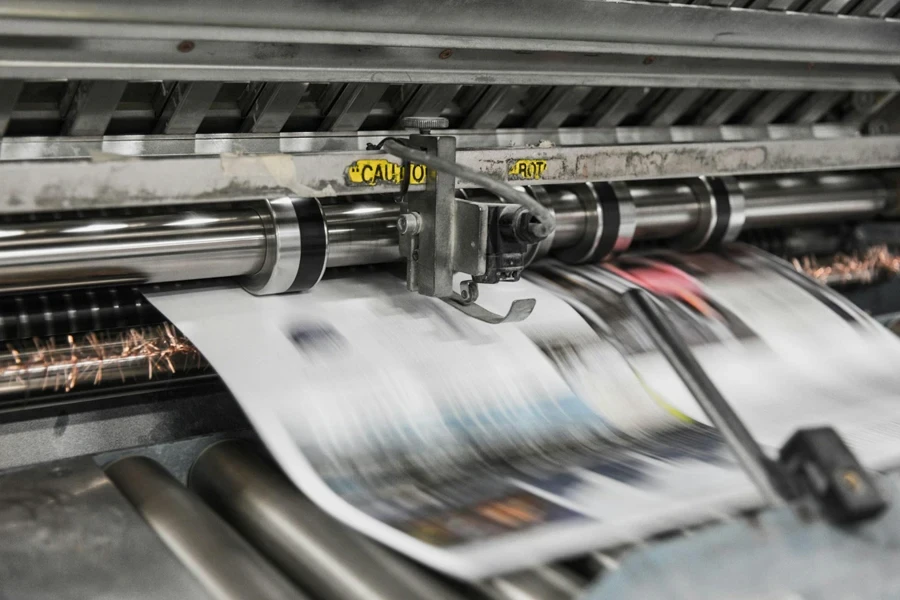Wondering which type of printer is right for your business? This article aims to demystify the debate between laser vs inkjet printers, helping you make an informed decision as a business buyer.
The guide will cover how these printers work, who needs to purchase one, and the considerations to keep in mind when deciding the right fit.
Table of Contents
How Do Laser and Inkjet Printers Work?
Industries That Require Printing
Laser vs Inkjet Printer — Which Should You Choose?
Wrapping Up
How Do Laser and Inkjet Printers Work?
Laser Printers

Laser printers follow a process that involves lasers, static electricity, and toner.
The user begins this process by sending a command from their computer (or another device) to the printer. The laser printer receives this command and prepares the printing process. Sounds easy, right?
This operation is more complex than one might think. The data that the printer receives is used to control a laser beam — one of the core components of the laser printer, which is pretty cool if you really think about it.
Without getting into too many technicalities, the laser works with the drum through a high-voltage power supply. By discharging the energy in a controlled way, the pattern that you want printed emerges. The drum is coated with toner, which is essentially a fine powder. Eventually, rollers transfer this toner onto the sheet of paper (or similar material), which attracts the toner particles.
Finally, the toner is fused to the paper through a series of heated rollers that are called the fuser unit. The permanent print is now consolidated on the piece of paper, and you, the user, can collect it from the printer.
Despite the complex sounding process, laser printers are both quick and efficient. They also produce high-quality text and graphic prints, making them ideal for high-volume printing jobs.
Inkjet Printers

Inkjet printers rely on liquid ink and precision nozzles instead. Just like laser printers, they first receive a command that the user sends to a computer or another device. This information tells the printer what to do. But here is where things change.
Instead of using lasers, inkjet printers use ink droplets and place them precisely where they need to go in accordance with the data they receive.
While laser printers rely on the laser, inkjet printers use what is called a print head. This device has thousands of tiny nozzles, also known as jets (where the printer gets its name). The jets microscopic droplets of ink, which are stored in cartridges, onto the paper as it moves through the printer.
There is a cartridge for black ink and another one for foundational colors (cyan, magenta, and yellow), which are then mixed to reproduce other palettes.
As the paper moves through the printer, ink droplets fall precisely to create the desired image or text. These may come in different resolutions and quality, which depends on the printer’s precision.
Finally, the final printed page is ejected from the printer and may need a little time to dry before it is used. Because inkjet printers are particularly good at blending colors, they are ideal for high-quality color prints and photos.
Industries That Require Printing

As many businesses go paperless to reduce their environmental impact, do you still need to invest in printers? Very likely, the answer is yes if you are in some of the following industries.
The finance sector, including banks and insurance companies, still heavily relies on printers. Legally, financial institutions must offer customers printed statements, certificates, and other official documents that are often required by regulatory bodies. These printed materials ensure that clients have tangible records of their financial transactions, which can be crucial for legal and personal purposes.
Government agencies also frequently require printing. Government documents, for instance, are essential for citizens. They may need anything from birth certificates and marriage certificates to criminal record checks and other registration information. Often, governments also need to store physical copies of documents for data security purposes.
In creative industries, such as graphic design and advertising, printers are simply indispensable. These businesses need to produce high-quality mock-ups and marketing materials. They also print large-scale outputs like billboards, flyers, banners, and so on.
Retail and hospitality sectors print things like price tags, inventory labels, menus, and promotional materials. These are often smaller-scale jobs but are critical to establishing their brand identity.
Finally, no matter what industry you are in, corporate headquarters still rely on physical printers for hard copies of important documents. This might include contracts, reports, and legal papers. Anything requiring ink signatures or corporate seals will need to printed and then securly stored if digital systems fail.
Overall, printers remain a vital tool across various industries. Sometimes, these are simple text documents for industries like finance and government agencies. For others, like marketing and advertisement, print jobs may entail high-quality, vibrant outputs that rely on more sophisticated printing tools.
Laser vs Inkjet Printer — Which Should You Choose?

Buying hardware like printers can be a significant investment. However, in addition to cost, there are several other factors to keep in mind when deciding between laser and inkjet printers.
Overall, laser printers are ideal for high-volume, text-heavy printing. This is because they are fast, efficient, and cost less in the long term. On the other hand, inkjet printers are better for producing high-quality color prints and photos. They are more versatile and cheaper from the get-go.
Cost
The initial cost of an inkjet printer is usually less than a laser one. A simple inkjet printer might cost less than US $100, while laser printers start at about US $200. This makes inkjet printers a good option for businesses with tighter budgets.
That said, more sophisticated models will require a higher investment no matter which printer you choose. Plus, you should consider the total cost of using and owning the printer.
Ink cartridges for inkjet printers are often more expensive and need to be replaced often. Laser printers use toner cartridges which last longer, making them slightly cheaper. So, if your business prints in high volume, then a laser printer could be more cost-effective in the long run.
Print Quality
Laser printers produce crisp, clear text, making them ideal for documents, reports, and any text-heavy materials. They can easily handle small fonts and fine lines and are better at this than inkjet printers.
Meanwhile, inkjet printers should be your choice for producing vibrant, high-quality images and graphics. They blend colors more effectively, making them ideal for marketing materials, photos, and any print jobs requiring rich color depth.
Speed and Volume
Laser printers are significantly faster than inkjet printers. Some models can print over fifty pages per minute. If your business needs quick turnaround times or to print large volumes, then consider a laser printer.
Materials
You can use standard paper sizes and types with laser printers. However, they cannot handle heat-sensitive materials because the printing process requires a high temperature to work properly.
In contrast, inkjet printers are more flexible. Sophisticated models can print on gloss photo paper, textured paper, and sometimes, even certain types of fabric. As such, if your business requires more versatility, then an inkjet printer is a better choice.
Maintenance and Durability
Inkjet printers require regular maintenance; otherwise, the ink may dry out and clog the nozzles. This could be quite a hassle, especially if you don’t need to print too frequently.
Laser printers are generally more durable. Even if you don’t use them for a long time, they shouldn’t be affected. This reliability, even when out of use, is ideal for businesses with less frequent printing needs.
Environmental Impact
Printing will inevitably come with a carbon footprint. In this, inkjet vs laser printers each have their own advantages.
Inkjet printers need less electricity, so they consume less energy. On the other hand, they generate more waste when frequently replacing ink cartridges.
By comparison, laser printers produce less waste over time but need more energy to print. These also offer eco-friendly models that offer features like duplex printing that reduces the use of paper.
Wrapping Up

When deciding between laser vs inkjet printers, consider your business’s specific needs.
- You should go for a laser printer if you print high volumes with a lot of text and need faster turnaround times.
- Alternatively, opt for an inkjet printer for high-quality color prints and media versatility.
By understanding these differences, business buyers can make informed decisions that align with their operational requirements and budget constraints.




